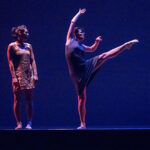Dance, an art form as old as humanity itself, has been a universal language of expression, celebration, and storytelling since the dawn of civilization. Evidence suggests that dance has been an integral part of human culture for at least 30,000 years, evolving and diversifying across continents and generations. From ancient rituals to modern-day performances, dance manifests in countless forms, each with its unique history, techniques, and cultural significance.
This guide delves into some of the most popular Types Of Dance around the world, offering a glimpse into their origins, characteristics, and enduring appeal. Whether you are a seasoned dancer, a curious beginner, or simply an admirer of this dynamic art form, understanding the different dance genres can enrich your appreciation for the vast and varied world of dance.
Here are ten popular types of dance that continue to captivate audiences and practitioners globally:
- Ballet
- Ballroom
- Contemporary
- Hip Hop
- Jazz
- Tap Dance
- Folk Dance
- Irish Dance
- Modern Dance
- Swing Dance
Delving into Popular Dance Genres
1. Ballet: The Epitome of Grace and Technique
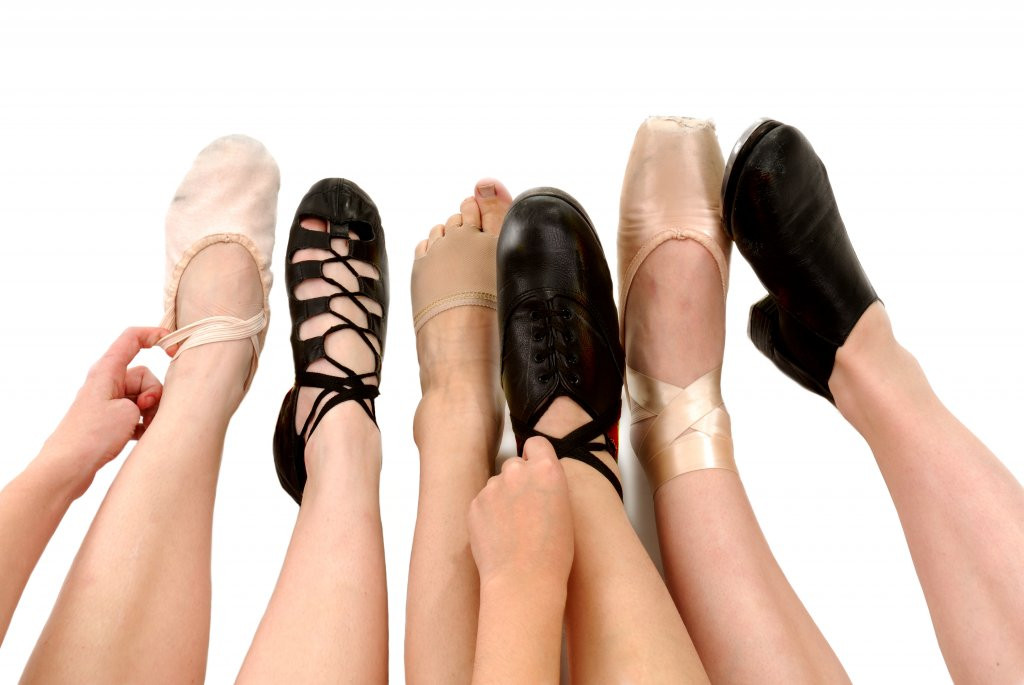 ballet dancers in performance
ballet dancers in performance
Ballet, a dance form synonymous with elegance and precision, originated during the Italian Renaissance courts of the 15th century. It blossomed in France and Russia, transforming into a theatrical performance art intended for public spectacle. Typically set to classical music and presented in elaborate productions, ballet tells stories through meticulously choreographed movements.
Ballet productions can range from opulent displays with intricate costumes and sets to minimalist interpretations emphasizing pure movement and form. Today, ballet is a globally recognized, highly technical dance discipline with several prominent subgenres, including classical ballet, romantic ballet, neoclassical ballet, and contemporary ballet.
The rigorous training in ballet encompasses six core recognized methods, each with its own nuances and pedagogical approach: Cecchetti, Bournonville, Vaganova, French School, Royal Academy of Dance (RAD), and Balanchine. Professional ballet dancers dedicate years to honing their skills at prestigious dance schools worldwide.
For ballet practitioners, the dance floor is crucial. Harlequin Floors offers specialized ballet dance floors engineered to provide the ideal balance of traction and slip resistance, minimizing injury risk while supporting the fluid, expressive movements characteristic of ballet. Harlequin Cascade is a favored choice for ballet studios and stages, often paired with sprung floors like those also offered by Harlequin for enhanced safety and performance. Complementing their flooring solutions, Harlequin Floors also provides professional ballet barres, available in wall-mounted, floor-mounted, and freestanding configurations to suit various studio and training needs.
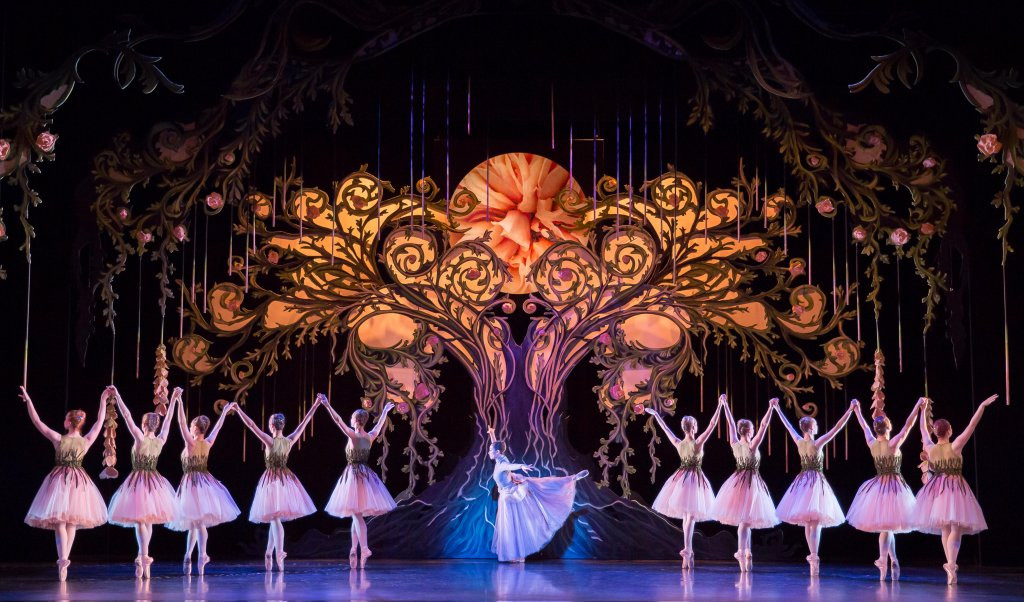 Scottish Ballet dancers performing on a Harlequin Cascade sprung and vinyl dance floor
Scottish Ballet dancers performing on a Harlequin Cascade sprung and vinyl dance floor
2. Ballroom: Partnered Elegance and Rhythmic Precision
Ballroom dance, a sophisticated form of partnered dance, emerged in France in the late 16th century. While “ballroom” is often used as a general term for partner dancing, it has evolved into two primary categories: Standard/Smooth and Latin/Rhythm.
The Standard/Smooth category encompasses dances like the Waltz, Tango, and Foxtrot, characterized by flowing movements and close partner connection. The Latin/Rhythm category features dances such as the Paso Doble, Bolero, and Samba, known for their energetic rhythms and sensual expressions.
Ballroom dance is a popular competitive dance form, also known as dancesport, with competitions held at local, national, and international levels. The diverse styles within ballroom necessitate a versatile dance floor. Harlequin Fiesta and the specially designed Harlequin Liberty Ballroom sprung floor are excellent choices, providing a surface that accommodates the varied demands of all ballroom styles.
Notably, Harlequin Liberty Ballroom is the floor of choice for the BBC’s popular show ‘Strictly Come Dancing’ and is also favored by professional World Ballroom Dance Champion, Christopher Hawkins, highlighting its quality and suitability for high-level ballroom performance.
 Dancers performing at a "Dance Against Dementia" event on a Harlequin Liberty Ballroom floor
Dancers performing at a "Dance Against Dementia" event on a Harlequin Liberty Ballroom floor
3. Contemporary: Expressive Freedom and Innovation
Contemporary dance, a dynamic and evolving genre, arose in the mid-20th century. It has become a prominent and technically demanding dance style, particularly popular in the United States and Europe, both for study and professional performance.
Contemporary dance draws inspiration from classical ballet, modern dance, and jazz dance, but it distinguishes itself by incorporating elements from a broader spectrum of dance forms. It is characterized by its emphasis on strong core engagement and legwork, incorporating techniques like contract and release, fall and recovery, and floor work. Contemporary dance is often recognized for its unpredictable shifts in tempo and rhythm throughout a performance, reflecting a spirit of innovation and personal expression.
The dynamic and often floor-based nature of contemporary dance requires a supportive and shock-absorbent surface. Harlequin Activity, with its innovative ‘triple sandwich’ sprung floor construction, combined with various Harlequin vinyl dance floors, provides an ideal surface, protecting dancers’ joints from the impact of rapid movements and rhythmic changes.
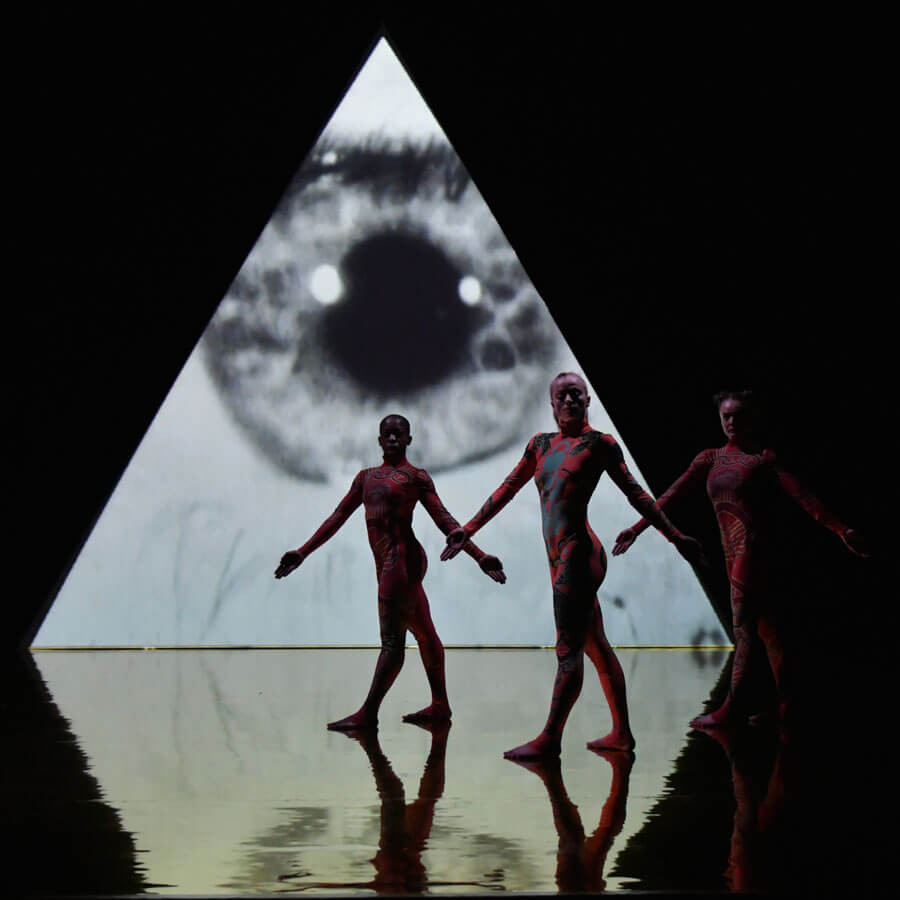 Contemporary dancer Rosie Kay performing on a Harlequin Hi-Shine vinyl floor
Contemporary dancer Rosie Kay performing on a Harlequin Hi-Shine vinyl floor
4. Hip Hop: Street Style and Rhythmic Innovation
Hip-hop dance encompasses a range of street dance styles that emerged alongside hip hop music and culture. Originating in the early 1970s in New York City and California, hip hop dance evolved from Funk and the development of breakbeats.
Key styles within hip hop dance include Breaking (breakdancing), Locking, and Popping. Derivative styles such as Memphis Jookin’, Turfing, Jerkin’, and Krumping have also emerged, often gaining mainstream popularity through music videos and media exposure. Today, hip hop dance thrives in diverse settings, from outdoor spaces and dance studios to competitive arenas.
Unlike many formal competitive dance styles, hip hop often embraces improvisation, with dance crews engaging in energetic “dance battles,” showcasing their creativity and skills.
Harlequin Floors has developed Harlequin Freestyle, a specialized dance floor specifically engineered to meet the unique demands of hip hop and other street dance styles, providing the right level of grip and resilience for these dynamic movements.
 Hip Hop dance crew Da Rookies performing on Harlequin FreeStyle floor
Hip Hop dance crew Da Rookies performing on Harlequin FreeStyle floor
5. Jazz: Syncopation, Improvisation, and Energy
Jazz dance traces its roots to 17th-century African traditions, brought to the Americas through the transatlantic slave trade. Enslaved Africans preserved and adapted their dance traditions in Brazil, the United States, and other parts of the Americas.
Characterized by improvisational and expressive body movements, jazz dance gained prominence in early 20th-century jazz clubs. Modern jazz dance builds upon African American vernacular dance styles that developed alongside jazz music in the US. Popular forms of jazz dance include Swing, Lindy Hop, Shimmy, and Charleston, all embodying the syncopated rhythms and energetic spirit of jazz music.
For jazz dancers, the floor surface plays a vital role in facilitating movement and expression. Harlequin offers a range of vinyl floors, including Harlequin Studio and Harlequin Allegro, which provide ideal surfaces for both jazz dance practice and performance, offering a balance of grip and slip for dynamic movements.
 Jazz dancers performing a jump, highlighting the energy and dynamism of the style
Jazz dancers performing a jump, highlighting the energy and dynamism of the style
6. Tap Dance: Rhythmic Footwork and Percussive Sound
Tap dance is a percussive type of dance distinguished by the rhythmic sounds created by tap shoes striking the floor. Tap dancers typically wear shoes fitted with metal “taps” on the heels and toes to amplify the percussive sounds.
Often featured in musical theatre productions, tap dance frequently emphasizes choreography and formations, with multiple tap dancers performing in unison. Tap dance encompasses various styles, including flamenco tap, rhythm tap, classical tap, Broadway tap, and postmodern tap, each with its own rhythmic and stylistic nuances.
Tap dancers aim to create crisp, clear, and resonant sounds with their footwork. This percussive nature of tap dance necessitates a specialized floor that enhances sound quality and provides a responsive surface. Harlequin Fiesta is an excellent tap dance flooring choice for dance studios and performance spaces. When paired with a sprung flooring system like Harlequin Liberty, it offers both optimal sound and joint protection, allowing dancers to perform with confidence and precision.
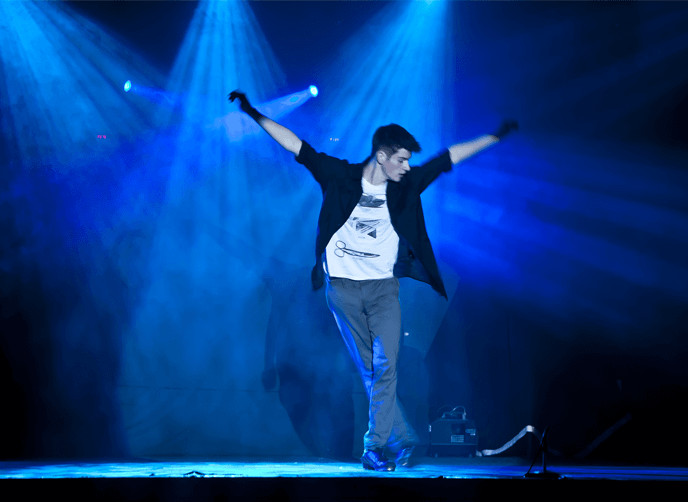 Tap Attack dance group performing on a Harlequin Cascade floor
Tap Attack dance group performing on a Harlequin Cascade floor
7. Folk Dance: Cultural Heritage and Community Celebration
Folk dance is a vibrant expression of cultural heritage, celebrated globally by diverse communities. People from various cultures and religions utilize types of folk dance to convey emotions, narratives, historical events, and aspects of daily life.
Well-known examples of folk dance include Bharatanatyam from India, Samba from Brazil, and Hula from Hawaii. Some cultures boast multiple variations of folk dances, with countries like South Korea having distinct dances for significant occasions such as war victories, farming rituals, musical performances, and religious ceremonies.
Folk dances are commonly performed at public events, fostering community participation regardless of dance experience. These dances are often accompanied by traditional music, enriching the cultural experience for both performers and audiences.
Harlequin Floors offers portable performance floors and dance floor hire services, making them ideal for folk dance events held in diverse public venues, ensuring a safe and suitable surface for cultural celebrations.
 Folk dancers in traditional attire performing a vibrant folk dance
Folk dancers in traditional attire performing a vibrant folk dance
8. Irish Dance: Energetic Footwork and National Identity
Irish dance, originating in Ireland, is a traditional dance form that has been cherished for centuries, both within Ireland and among Irish diaspora communities worldwide. Popularized by shows like Riverdance, Irish dancing is renowned for its intricate footwork, upright posture, and captivating group formations.
Traditionally, Irish dance performances are accompanied by live music and sometimes singing. Festivals and competitions (“feiseanna”) are central to Irish dance culture, showcasing talent and awarding trophies and medals.
While group performances are widely recognized, solo Irish dances, such as stepdance, are also prominent and technically demanding.
For Irish dance floors in studios or performance spaces, Harlequin Floors offers specialized sprung dance floors. Paired with a Harlequin vinyl floor like Harlequin Standfast, these systems create a high-quality surface that supports the rigorous footwork of Irish dance while providing essential impact absorption.
 Riverdance troupe performing in Killarney, Ireland on a Harlequin Cascade floor
Riverdance troupe performing in Killarney, Ireland on a Harlequin Cascade floor
9. Modern Dance: Freedom of Expression and Individual Interpretation
Modern dance emerged primarily in Western countries like the USA and Germany in the late 19th and early 20th centuries. Considered a broad dance genre, modern dance intentionally breaks away from the structured steps and rigid techniques of traditional forms like ballet. Instead, it emphasizes a dancer’s personal interpretation of music and emotional expression as the driving force behind movement.
Modern dance arose from a dissatisfaction with the constraints of traditional dance forms, which many dancers felt limited their artistic freedom. Today, modern dance is enjoyed globally, offering dancers the opportunity to explore movement without strict adherence to classical techniques or turnout. Dancers are encouraged to select music and utilize unconventional movements to convey emotions or tell stories in a deeply personal way.
To further enhance the expressive possibilities of modern dance, Harlequin Floors offers printed vinyl performance floors. These floors allow for bespoke designs inspired by choreography or a choice from standard patterns, adding a visual dimension to performances. The versatility and freedom inherent in modern dance mean that dancers often find Harlequin’s wide range of vinyl dance floors suitable for their practice and performances.
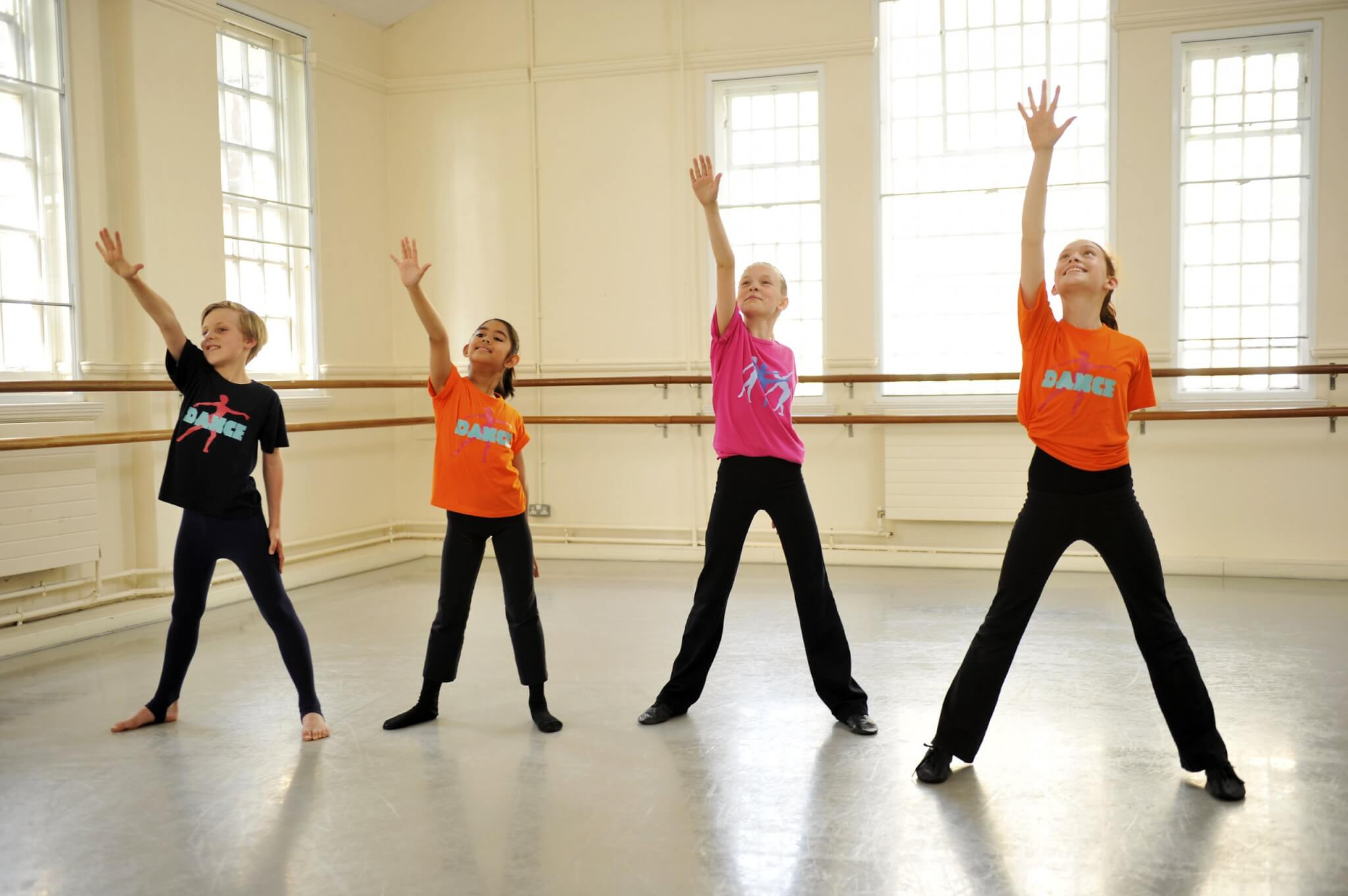 Royal Academy of Dance students in a modern dance class on a Harlequin Cascade floor
Royal Academy of Dance students in a modern dance class on a Harlequin Cascade floor
10. Swing Dance: Joyful Partnering and Upbeat Rhythms
Swing dance is a lively variation of jazz dance that developed in the 1920s to 1940s, coinciding with the rise of swing jazz music in America. The evolution of music during the Jazz Age spurred changes in dance, with swing music encouraging faster tempos and more energetic movements.
Popular forms of swing dance include Lindy Charleston, Jitterbug, Lindy Hop, and Balboa, many of which remain popular social dances today. Swing dancing was typically accompanied by Big Band musicians, who played smooth, upbeat melodies that were perfect for dancing.
Swing dancers will find Harlequin’s range of vinyl dance floors ideal for their energetic style. Similar to jazz dancers, swing dancers can create dynamic and joyful performances on floors like Harlequin Reversible Pro, which offers a high-performance, slip-resistant surface to ensure dancer safety and confidence.
From home dance practice equipment to portable ballet barres, Harlequin Floors provides a comprehensive range of professional products for dancers of all styles, whether for home studios or professional dance spaces. Their expert technical teams also offer a professional dance floor installation service to ensure Harlequin floors are correctly installed and meet all safety standards.
Contact us online to learn more and find the perfect dance floor solution for your needs.

